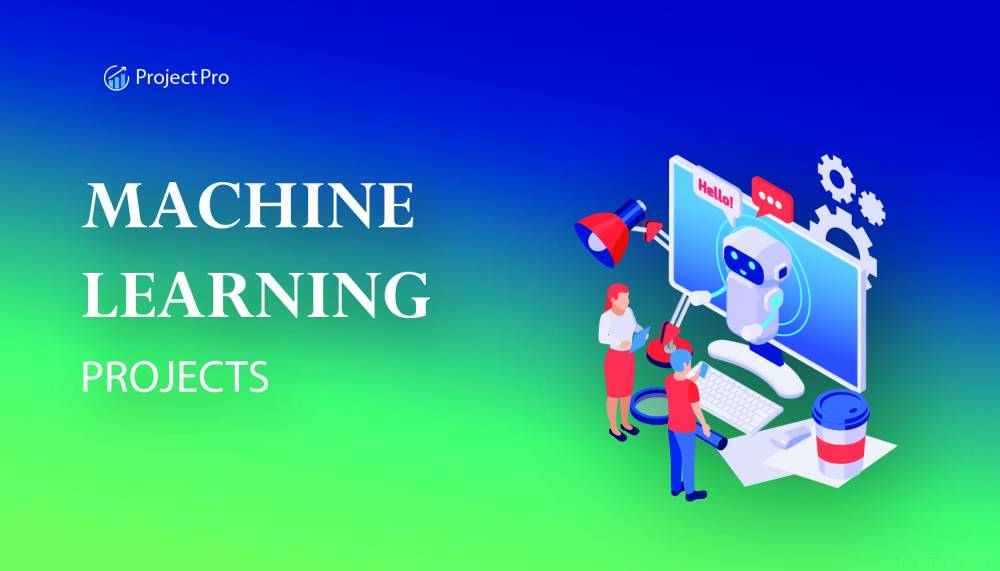
About:
While theoretical machine learning knowledge is important, hiring managers value production engineering skills above all when looking to fill a machine learning role. To become job-ready, aspiring machine learning engineers must build applied skills through project-based learning. Machine learning projects can help reinforce different technical concepts and can be used to showcase a dynamic skill set as part of your professional portfolio.
No matter your skill level, you’ll be able to find machine learning project ideas that excite and challenge you. For inspiration, we’ve gathered examples of real-world ML projects geared towards beginner, intermediate, and advanced skill levels. Using these projects as templates, we’ll explore what a completed project should look like and discuss actionable tips for building your own impressive machine learning project.
First, we’ll examine basic machine learning projects geared toward learners who are proficient with R or Python (the most renowned language in the field of Data science and machine learning) programming language and want to experiment with machine learning fundamentals. Next, we’ll review ML project ideas suited for those with intermediate and advanced machine learning skills.
After striking an iceberg, the so-called “unsinkable” RMS Titanic disappeared into the icy waters of the North Atlantic on April 15th, 1912. Over half of the ship’s 2224 passengers and crew members perished, and demographic data shows that some people aboard were more likely to survive than others.
This Kaggle project asks participants to build a model that predicts passenger survival based on passenger information like ticket class, gender, age, port of embarkation, and more. Kaggle offers a training data set that participants can use to build their own machine learning models, which can be constructed locally or on Kaggle Kernels (a no-setup, customizable Jupyter Notebooks environment with free GPUs).

Try your hand at determining the probability that a given tweet originated from a particular user with sentiment analysis. This natural language processing technique can scan thousands of text documents for specific filters in a matter of seconds. This technique is how Twitter, for example, can scan and separate out tweets that contain racist or misogynistic content.
For inspiration, check out Eugene Aiken’s application of natural language processing to determine the probability that certain tweets were published by either Donald Trump or Hillary Clinton. To conduct a similar project, you’ll need to pick two users, scrape their tweets, run your twitter data through a natural language processor, classify it with a machine learning algorithm, and use the predict-proba method to determine probabilities. Learn more about the original project here and download the data set .
This Kaggle competition will help you practice creative feature engineering as well as regression techniques like random forest and gradient boosting. The goal of the project is to predict the final sales price of a home based on the Ames Housing Dataset.
The data includes 79 explanatory variables that describe vital attributes of homes in the city of Ames, Iowa. These data points range from zoning classification to lot size, remodel date, proximity to a railroad, and even masonry veneer type. The effect of each characteristic on house prices might surprise you!
Google users perform roughly 3.5 billion search engine queries per day. If you’re wondering what people are Googling, try using Google Trends to analyze a keyword of your choice. Google Trends offers an API called pytrends, which Aman Kharwal used to analyze the performance of the keyword, “machine learning.”
Aman used this tool to pinpoint 10 countries with the highest number of searches for “machine learning,” and also determined how the number of “machine learning” search queries changed over time. After conducting his analysis, Aman then used data visualizations to communicate his findings. Try building your own data visualization and consider what story your results might tell, and how that information could be important in a business context.
Chatbots are AI-powered applications that simulate human conversation, and are often implemented to field simple customer queries online. If you’re interested in natural language processing, try creating a Chatbot with Python’s NTLK library.
First, you’ll need to compile a list of queries and their correlating responses for the chatbot. Next, you’ll run the program and try out your queries with the chatbot. Once you’re satisfied with your baseline chatbot, you can use additional Python NLP packages or add more queries. To get started, take a look at Aman Khalwar’s
If you’re curious about computer vision, , which invites participants to build a digit recognizer using the classic MNIST dataset of handwritten numbers. The MNIST dataset—commonly referred to as the “Hello World” of machine learnings—comes equipped with pre-extracted features, which will streamline your data processing. Overall, this competition is an excellent introduction to simple neural networks, computer vision fundamentals, and classification methods like SVMs (Support Vector Machines) and K-nearest neighbors.
The competition also includes links to Python tutorials, as well as information about the details of the dataset (including previously applied algorithms and their levels of success).
Building a recommendation engine sounds like a difficult task for a beginner, but your code can be as simple or as complex as you’d like. To create a basic content-based recommendation system, you’ll just need to maintain a log of items a user has seen and liked and calculate the top-N most similar products that user has not yet seen. A simple collaborative filtering recommendation engine can be powered by a user-user similarity matrix that recommends items that similar users like.
To learn more about building a Python recommendation engine, which explains how to implement collaborative filtering and content-based filtering in Python to generate personalized recommendations. The notebook explores these concepts using a rich, rare dataset about article sharing.

From banking via smartphones to AI-fueled stock price prediction, the financial sector embraces a cloud-based future. Thanks to a rising financial crime rate, the importance of AI-powered fraud detection is greater than ever. But because fraudulent financial interactions comprise only a small portion of the total number of financial transactions that occur daily, analysts must figure out how to reliably detect fraud with imbalanced data.
Fraud detection is a classification problem that deals with imbalanced data, meaning the issue to be predicted (fraud) is in the minority. As such, predictive models often struggle to generate real business value from imbalanced data, and sometimes results may be incorrect.
To address the issue, you can implement three different strategies:
Text summarization condenses a piece of text while preserving its meaning. Increasingly, text summarization is being automated with Natural Language Processing. Extractive text summarization uses a scoring function to identify and lift key pieces of text from a document and assemble them into an edited version of the original. Abstractive text summarization, however, uses advanced natural language processing techniques to generate a new, shorter version that conveys the same information.
To create a text summarization system with machine learning, you’ll need familiarity with Pandas, Numpy, and NTLK. You’ll also need to use unsupervised learning algorithms like the Glove method (developed by Stanford) for word representation. Find a step-by-step guide to text summarization system building here.
Note: Find the best solution for electronics components and technical projects ideas
keep in touch with our social media links as mentioned below
Mifratech websites : https://www.mifratech.com/public/
Mifratech facebook : https://www.facebook.com/mifratech.lab
mifratech instagram : https://www.instagram.com/mifratech/
mifratech twitter account : https://twitter.com/mifratech
Contact for more information : mifratech@gmail.com / 080-73744810 / 9972364704